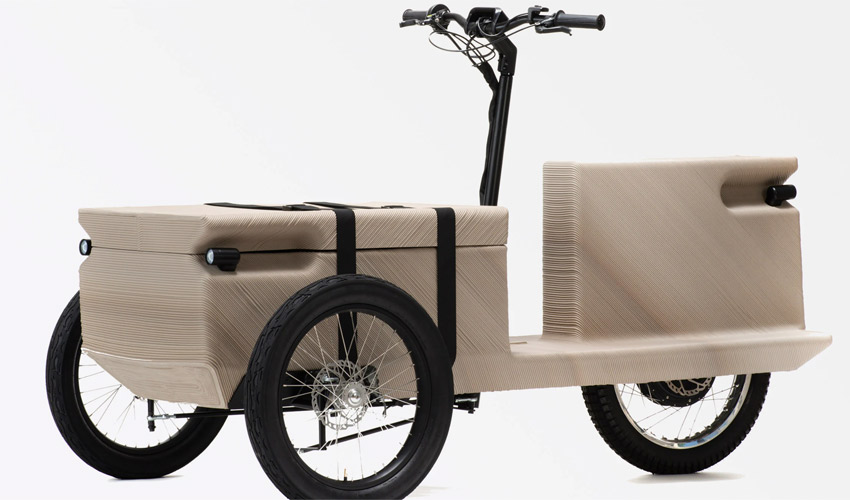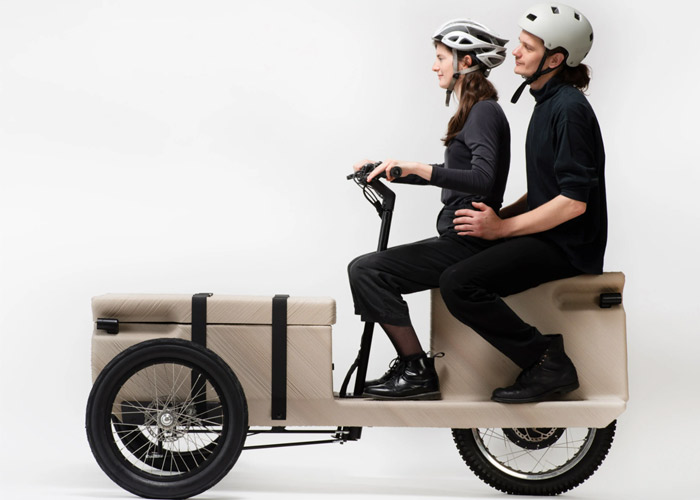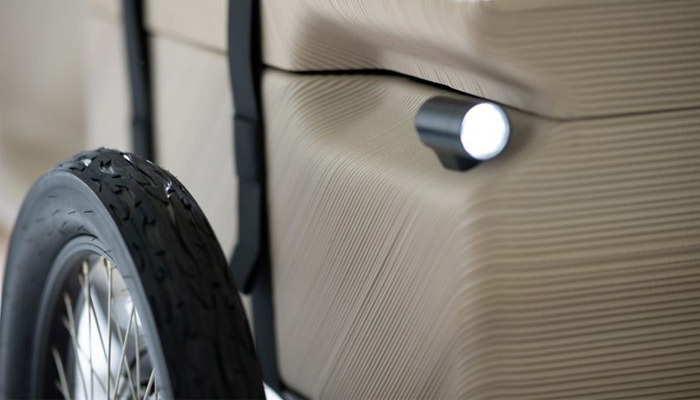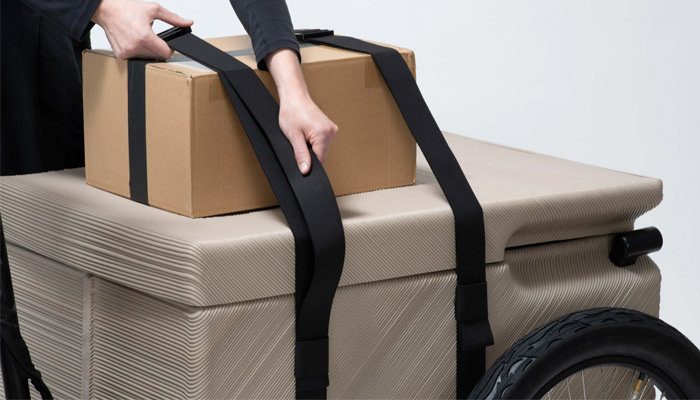A 3D Printed Electric Tricycle Made From Recycled Waste

The Austrian design studio, EOOS, has developed a zero-emissions utility vehicle (ZUV), created using 3D printing and recycled materials. The 3D printed electric tricycle was made from 70kg of waste collected from various supermarkets in the Austrian capital. Its particularity also lies in the absence of pedals and chain: the bike moves forward thanks to a rear wheel hub motor. The objective is to allow everyone to 3D print the frame in a fablab near their home and to equip the bike in a suitable store (wheels, brakes, handlebars, motor). This concept of local production has become more popular as it aims to reduce our ecological impact.
The Austrian studio worked with the association The New Raw to carry out this project. If the name rings a bell, it’s probably because of the Print Your City project, which started with 3D printing street furniture from recycled waste in Amsterdam. The association surfs on this idea of circular economy by giving a second life to everything we can throw away. An impossible idea without the use of additive manufacturing.

Photo Credits: EOOS
ZUV, a bicycle that is local and more sustainable
The bike project started with the desire to design an affordable vehicle that could be produced locally. 3D printing offered this possibility, so the EOOS studio imagined a polypropylene frame, printable on a large format machine – most likely a robotic arm. The material used would come from the waste of Vienna’s supermarkets. Harald Gründl of the EOOS studio explains: “When supermarket plastic in Vienna goes to recycling, they’re just burning it. And this creates another three tonnes of CO2 emissions, which we could avoid. The reuse of post-consumer plastics is a big step towards net-zero carbon emissions. Every new vehicle will be, in a way, carbon neutral as long as the 3D printer is operated with energy coming from renewables.”
Eventually, EOOS would like each city to be able to 3D print the tricycle’s chassis; the rest of the parts can then be easily attached by a specialized equipment manufacturer. If a component fails, it can be easily replaced – again locally – while the chassis can be recycled and reused to form another ZUV.

The frame is 3D printed while the other parts are to be fixed in a bike store (photo credits: EOOS)
The studio specifies that the bike is strong enough to carry two adults, or two children on the back seat, or groceries for example in the box provided for this purpose in the front. ZUV has been designed to make short trips which are usually done in a car.
Ultimately, the concept of zero emissions lies more in the production of the bike itself rather than in its operation. However, thanks to 3D printing, the frame can be manufactured locally, reducing transportation and the ecological impact of its production. It remains to be seen whether this concept will be implemented in other cities in Europe and more widely in the world.

ZUV is convenient for shopping (photo credit: EOOS)
What do you think about the ZUV 3D printed electric tricycle? Let us know in a comment below or on our Facebook and Twitter pages. Don’t forget to sign up for our free weekly newsletter, with all the latest news in 3D printing delivered straight to your inbox!






